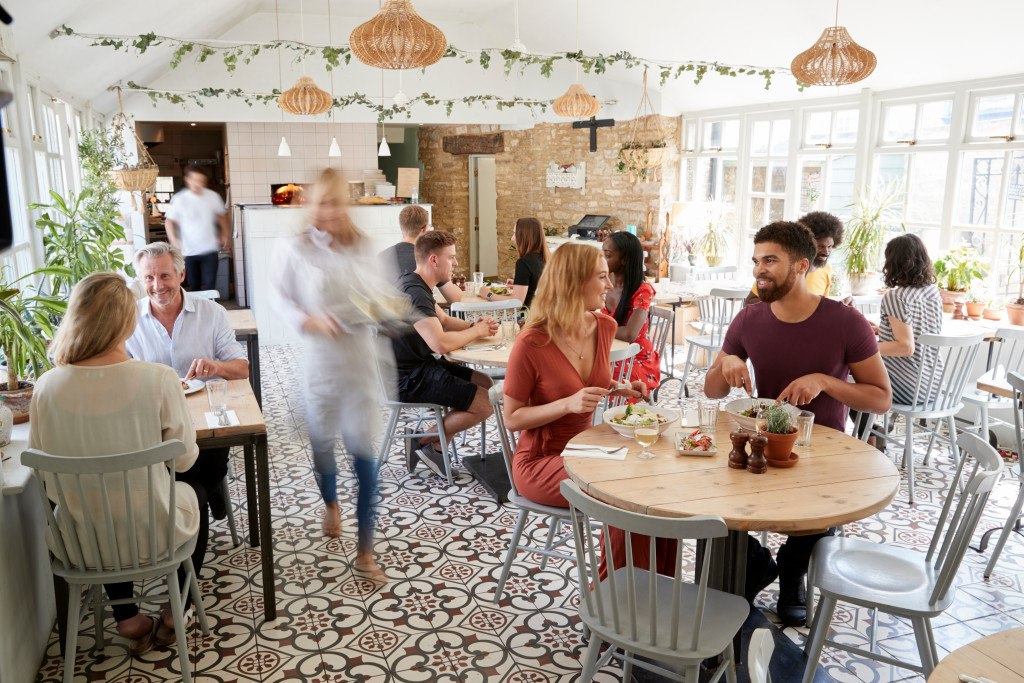Food businesses have always faced health risks. Before opening, dining establishments go through several safety inspections to ensure that their premises follow health and sanitation standards. One of the biggest health risks they face is food poisoning. It only takes one ill customer for a restaurant to shut down for good.
But no one predicted that it’s not a gastrointestinal disease that would close down almost all restaurants. Instead, it’s a global pandemic that doesn’t even spread through food.
COVID-19 became the biggest threat to all businesses. But food businesses, especially restaurants, were thrust into a unique challenge. Many of them were allowed to remain open, as long as they would prohibit indoor dining. They could only allow outdoor dining, and in areas where indoor dining wasn’t restricted, restaurants had to reduce the space’s capacity. It’s the only way to promote social distancing.
Even now, with many people already vaccinated, indoor dining remains risky. So how will your restaurant get by for the rest of the year with this limitation?
1. Stay Cautious
Continue observing all the health protocols you’ve been adopting since last year. If your business doesn’t get associated with any infections, it means your systems are working. So keep placing the tables apart, and don’t turn on your AC yet. Thankfully, summer’s over, so your premises should be cool even without the A/C on. If you’d turn on the heater, ensure that the space is well ventilated. Viruses spread fast in contained areas without ample ventilation.
2. Concentrate on Low-risk Services
Everyone understands that business is slow right now. And you’re not alone in this challenge. Restaurant sales in 2020 were over $240 billion lower than the forecasts. During the lockdown, more than 110,000 restaurants shut their doors temporarily.
Most small-scale dining establishments are just recovering right now. So take things slow and focus on your low-risk services first. That would be door-to-door deliveries, curbside pickup, al fresco dining, and drive-thru. While the restrictions have slightly eased down regarding on-site indoor dining, it won’t be wise to let your guard down immediately.

Despite many Americans being fully vaccinated, indoor dining continues to be discouraged because a few unvaccinated people may be among them as they dine. And since all their masks are off, their droplets spread all over the place as they talk and laugh. They’d also wipe their mouths using the restaurant’s napkins.
If an unvaccinated, COVID-19-positive customer touches their credit card using the same hand they touched their napkins with, they could infect a restaurant staff. And when that customer leaves, the cleaners will clear off their table, touching the potentially contaminated napkin.
You can prevent such risks by requiring your staff to wear gloves and keep their hands off their faces. They should also be washing their hands after handling vacated tables. But since these procedures are time-consuming and tedious, it’s better to focus on your low-risk services to minimize contact with customers and their stuff.
3. Increase Communication With Your Customers
Engaging with your customers is crucial right now. People spend more time with their mobile devices now, so this is an excellent time to reach out to them as often as you can. But instead of urging them to risk their safety but going to your restaurant to eat, let them know about your health and safety measures.
For example, put up a sign on your main entrance stating that you’re using an efficient thermal imaging system. More commonly known as a thermal camera, this device detects a person’s body heat, helping you determine whether a customer has a fever or not. It is a more streamlined way to conduct health checks than checking each’s customer’s temperature manually.
Informing your customers about your mandatory health checks can increase their trust in your business. They’d know that despite the decrease in sales and restrictions, you still prioritize everyone’s health. This indirectly encourages your customers to buy from you too. Your health checks can reduce their anxiety about going out to eat.
4. Embrace the Changes
It’s possible that the changes we’ve seen in industries because of the pandemic will last indefinitely. From now on, masks may be a regular part of everyone’s outfit. There could be more outdoor seats than indoor seats in restaurants. Deliveries or online orders may bring in more business than on-site dining. Considering that we’re all so focused on waiting for “normal” to return, these changes will need a little getting used to. But this is the new normal, so let’s embrace it rather than resist it.
It may be bothersome and a little intimidating, but the new normal is safe and has taught us how to look after ourselves in ways we’ve never done before. So swim with the current; it would give your customers a sense of stability as well.





